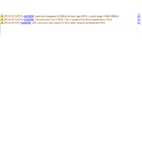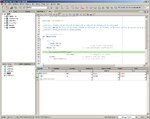begin_mplab
Newbie level 1
hello ,
I'm a beginer in MplabX and in PIC and i would like to begin with a simple example with pic24f and MplabX ,XC16 and a led (i like to understand the configuration of input and output of PIC)(langageC).
So please can you help me to send me a simple example or any link that can help me. (All example that i m found in google are wth MikroC or XC8)
thanks in advance
I'm a beginer in MplabX and in PIC and i would like to begin with a simple example with pic24f and MplabX ,XC16 and a led (i like to understand the configuration of input and output of PIC)(langageC).
So please can you help me to send me a simple example or any link that can help me. (All example that i m found in google are wth MikroC or XC8)
thanks in advance



